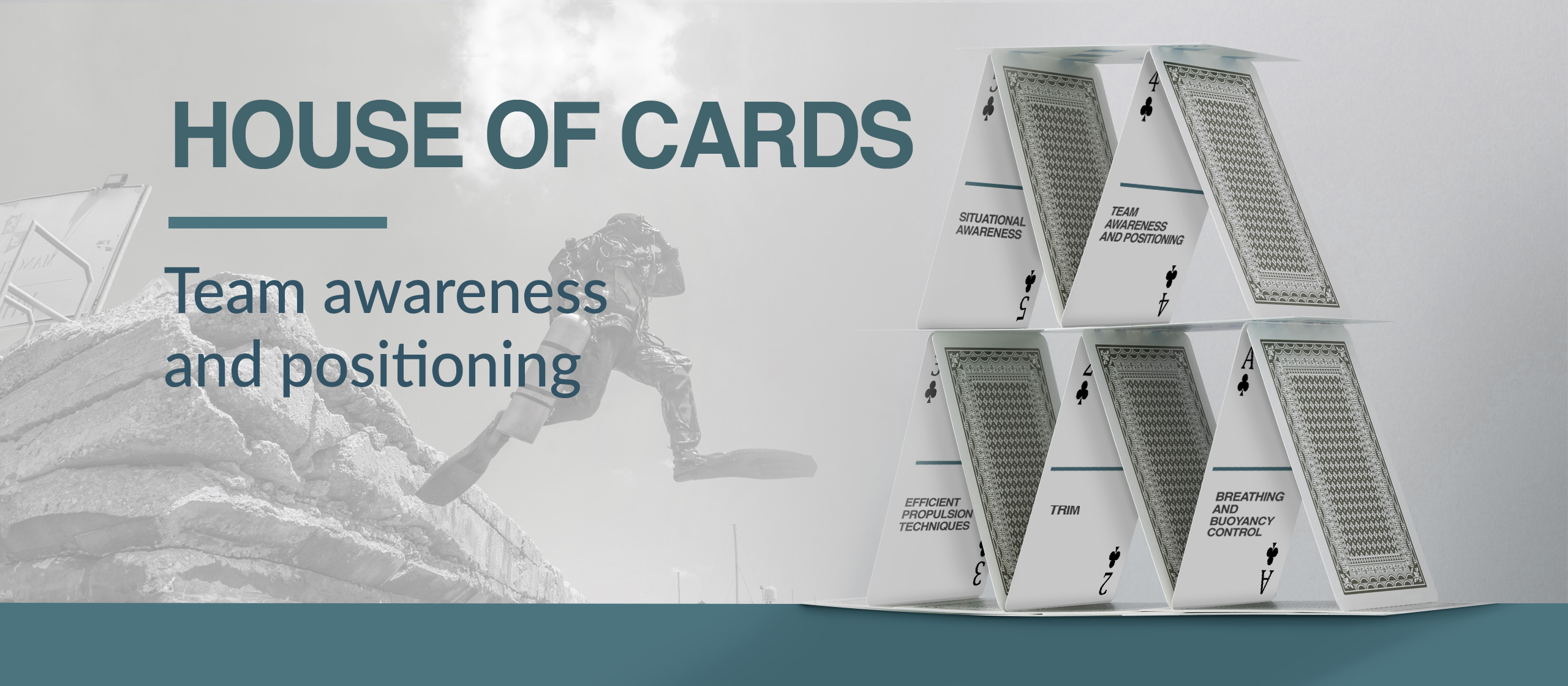Prepared diver
Team Awareness & Positioning
A team is a group of people linked in a common purpose. A group does not necessarily constitute a team. Teams normally have members with complementary skills and generate synergy through a coordinated effort which allows each member to maximise their strengths and minimise their weaknesses.
Naresh Jain (2009) proposed: “Team members need to learn how to help one another, help other team members realise their true potential, and create an environment that allows everyone to go beyond their limitations.”
A dive team should share common capabilities and values, providing redundancy for each other. This includes identical procedures and protocols, skillset, experience, knowledge to support the objective, similar equipment configuration, and more. A vital part of team diving is awareness of the team’s abilities, physical and mental state and being ready to protect, support and strengthen the individuals within the team. It is common practice that tasks are distributed amongst the team members, like primary navigation, running a reel, shooting a SMB, operating a camera, and managing the decompression strategy. All team members should be totally redundant in these tasks and thus all team members should be able to perform any task and take over if necessary.
I always like to refer to a solid dive team as a collective brain, interacting and seamlessly integrated, the power of a diver multiplied by the number of team members. The collective brain can perform tasks and create a level of safety and comfort, beyond the reach of the single recreational diver, making team diving the perfect tool for project-oriented diving.
Diving can and should typically be a team activity; for me the team focus is foundational and a big contributor to safety, comfort, and success during goal-oriented diving.
JP Bresser, GUE Instructor
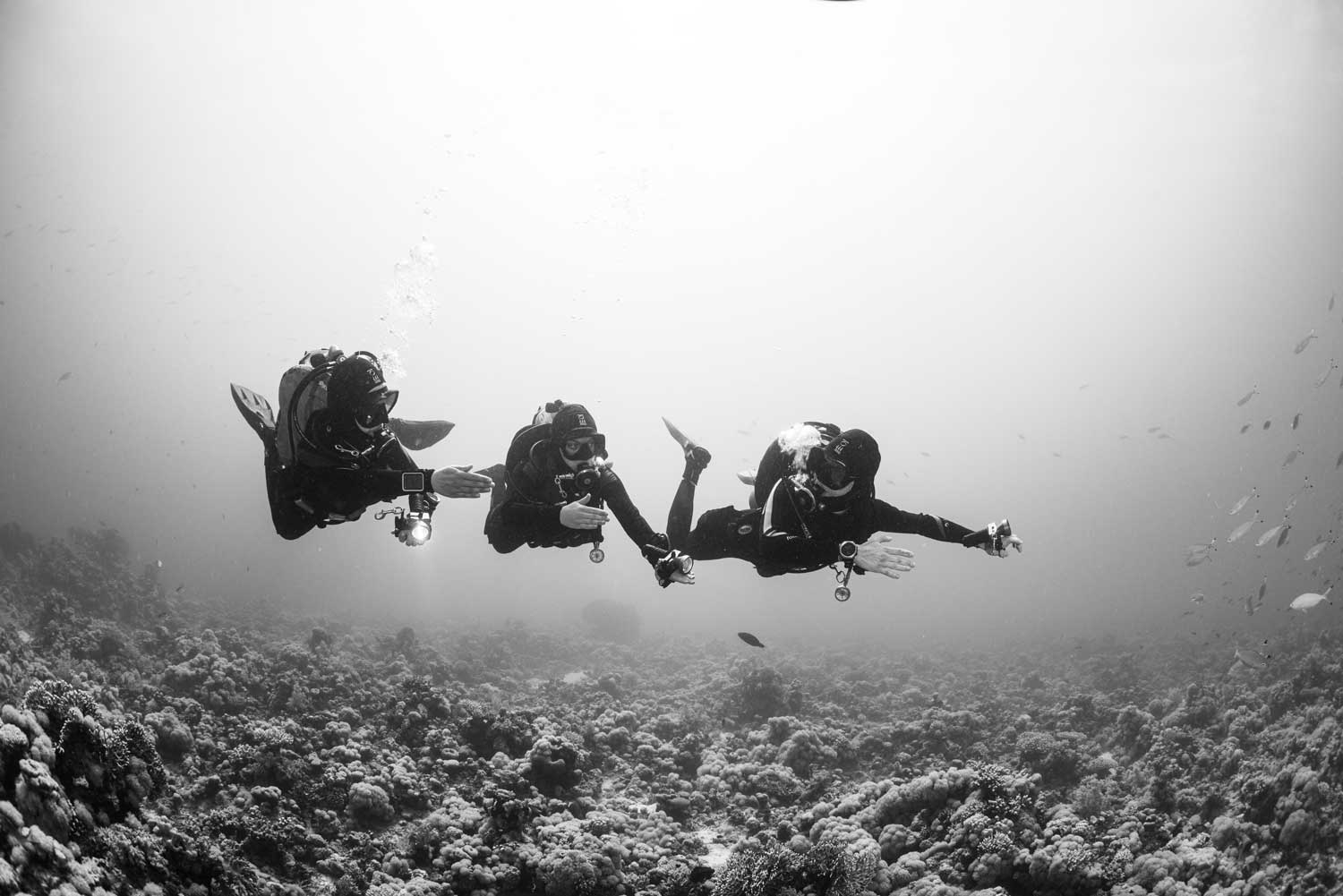
Have you ever seen a murmuration? Hundreds, sometimes thousands of starlings flying together in whirling, ever changing pattern, twisting and changing directions at a moment’s notice. How can a swarm of birds fly as one and coordinate such complicated choreography in perfect synchronisation? It’s easy to understand how one starling knows to turn when its neighbour turns, since they’re close together and can see each other but how hundreds or thousands of starlings manage to turn simultaneously, when birds at opposite ends of the flock are separated by space and hundreds or thousands of other birds remains a mystery. Right? We are not starlings and ‘swarm of divers’ tends to be limited to a handful of individuals. But what if, beyond the beauty of the choreography, we managed to dive as one, mirroring one another or performing complementary tasks supporting one another in perfect position? Wouldn’t it be more enjoyable and safer to be able to position ourselves and communicate anticipating the plan and or mitigating risks if an unexpected situation came to happen?
Throughout our diving education, we transition from self awareness focusing on managing our initially unsteady house of cards basics: breathing and buoyancy control, trim and propulsion techniques. Metaphorically, and in this case with another kind of wing, we learn how to fly. As mastery builds up through practice, we follow a guide and turn our attention outwards—enjoying more of the environment and the company of others, flying metres apart in a three-dimensional underwater world. Team and awareness are two notions we have not yet envisioned. We are simply a group of individuals who dive in the same place at the same time, not having much clue about our ‘buddy’s’ equipment, skill level, or emergency procedures management, which might differ from our own training history. Communications during the dive are a chain of reactions rather than anticipation, limited to some random “OKs,” “Look at this,” until someone’s pressure gauge rings the bell-It’s time for everyone to head back home. Should one diver go missing on the way, we learned to search for a minute before surfacing. The whole picture is one of a poorly planned dive by a disorganised and unsafe crowd of divers. Hopefully, no one ends up kicking their neighbour’s mask while turning unexpectedly to figure out ‘where in the underwater world’ their mate has vanished.
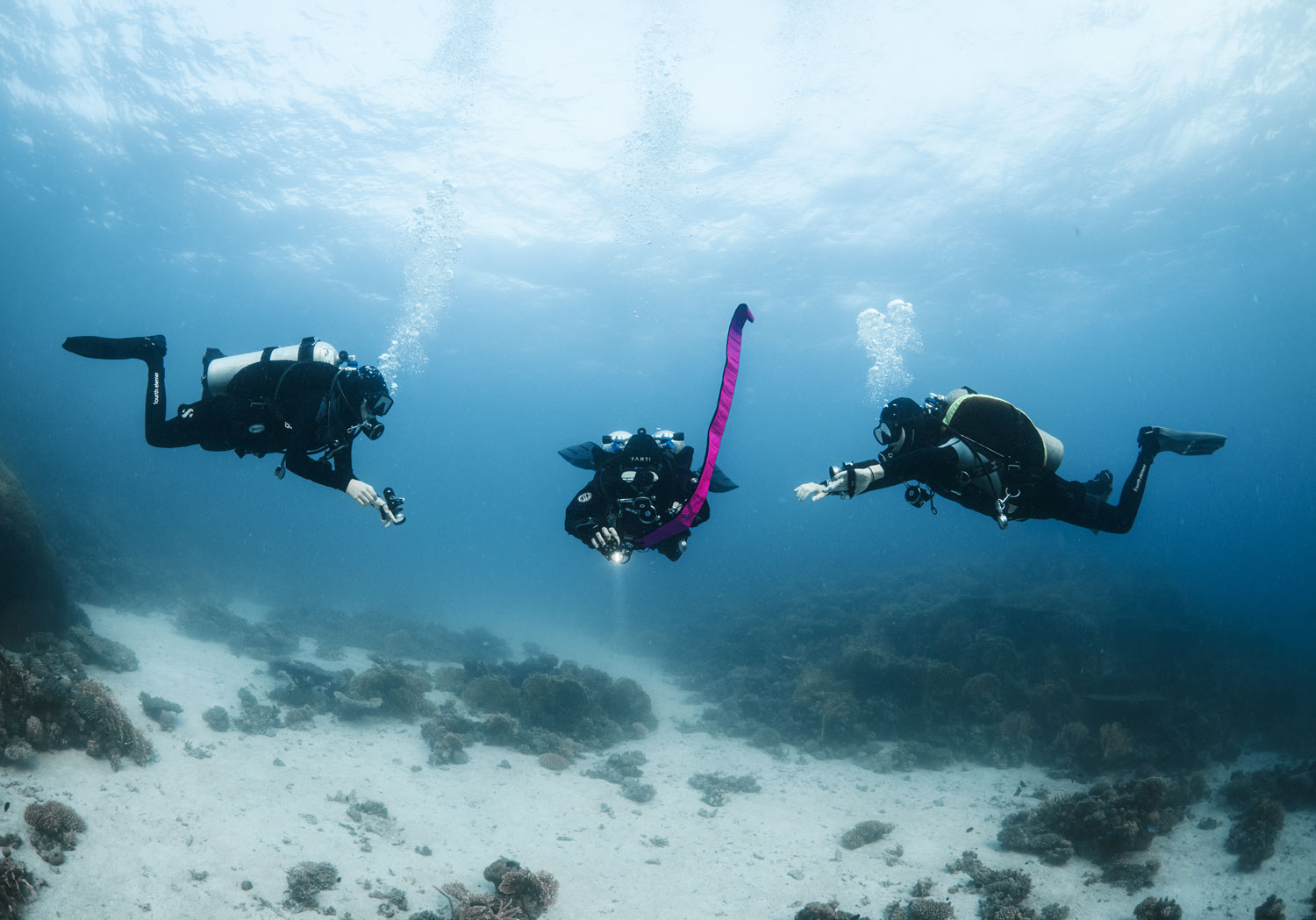
There are two main purposes for diving as a team: safety and complementarity. Safety is met when a reasonable number of divers (two to three maximum, four being two teams of two) join together as a safeguard to jointly address any problem such as equipment failure, intricate navigation or deal with environmental issues. The recommendation to have redundancy in diving does not only apply to the equipment, but also to the number of brains and pairs of eyes available to deal with any situation. Some dives, such as decompression dives, will require divers to mirror one another’s actions as part of the procedure they have learnt throughout training. Complementarity steps in when divers become dependent on one another and are assigned different roles and tasks in order to complete a mission. Overhead environments are a good example where one diver who is in charge of line deployment might be the eyes forward and the other might look backward to spot any line trap, and provide support with lightning.
“The recommendation for redundancy in diving does not only apply to the equipment, but also to the number of brains and pairs of eyes available to deal with any situation”
Whatever the dive configuration, the team plans the dive, visualises the plan, dives the plan and respects the fact that any team member can call the dive at any time for any reason. More than just a golden rule, it is a safeguard.
Team Awareness and positioning are essential to members’ safety and to enable the communication within the team. This awareness is driven by the combined cognition of its members i.e., their ability to perceive, understand and project events based on former experiences both as an individual and as a group. Needless to say, a team member’s awareness should not be distracted by poor buoyancy, trim or the inability to have a chat facing one another.
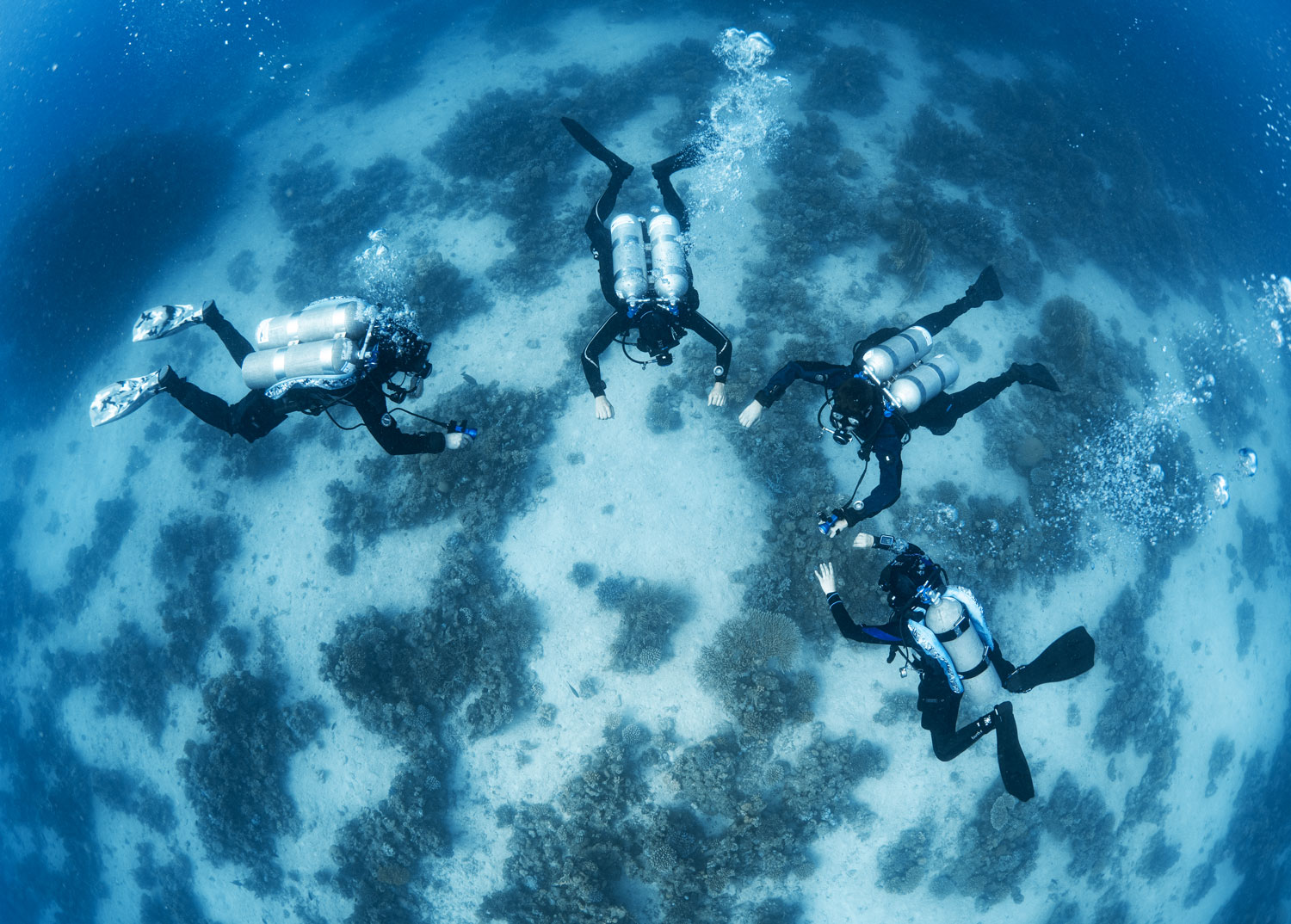
Positioning is greatly supported by the ace cards: breathing and buoyancy control, trim, and efficient propulsion techniques, as we documented earlier in the House of Cards series. Being able to navigate side by side, at arm length distance, or half a body distance with one behind the other, enhances the speed of response when a problem arises. Being able to locate team members visually by simply turning one’s head, or through passive light communication without needing to turn around constantly, is a safeguard that will prevent kicking in a team mate’s mask or damaging the environment.
The ability to face one another on ascents and descents, and to use the environment for the team’s safety, enhances communication procedures and enables an appropriate chain of reactions should one team member suffer from some sort of vertigo or any equipment failure. Using the environment for potential physical support is also part of the team awareness: for example, using a shot line rather than drifting in the blue, positioning the team parallel to a drop off rather than turning one’s back to it, being able to deploy a SMB at depth to support the team’s ascent, while also notifying the surface, earlier than later, about the team’s location.
Communication within the team relies on a common language that needs to be learned, practised and validated before the immersion. After a number of practice dives, the team learns to speak one voice. Should the team change, the voice should be no different. This is paradoxically one of the major differences between the recreational and the technical diving world: while most recreational divers receive a briefing covering underwater communications, which typically varies from one location to another, for the most part, the technical diving community have settled on a common international language, independent of training agency. Once underwater, words are no longer spoken, but communication is enabled through other means; hand signals, writing, light signals and touch contact.
However, much of the real communication is implicit, which brings us back to the foundation of awareness. Most of us have a special buddy—the one we love to dive with because we know what each other is up to without having to express anything. This ability to see beyond the mask, to read other team members, to use the environment and understand what the current situation is, and how to interact, does not come as a miracle—it takes time, practice and humility. Some critical skill circuits conducted as part of training sessions, highlight the team’s ability to cope with any challenging situation.
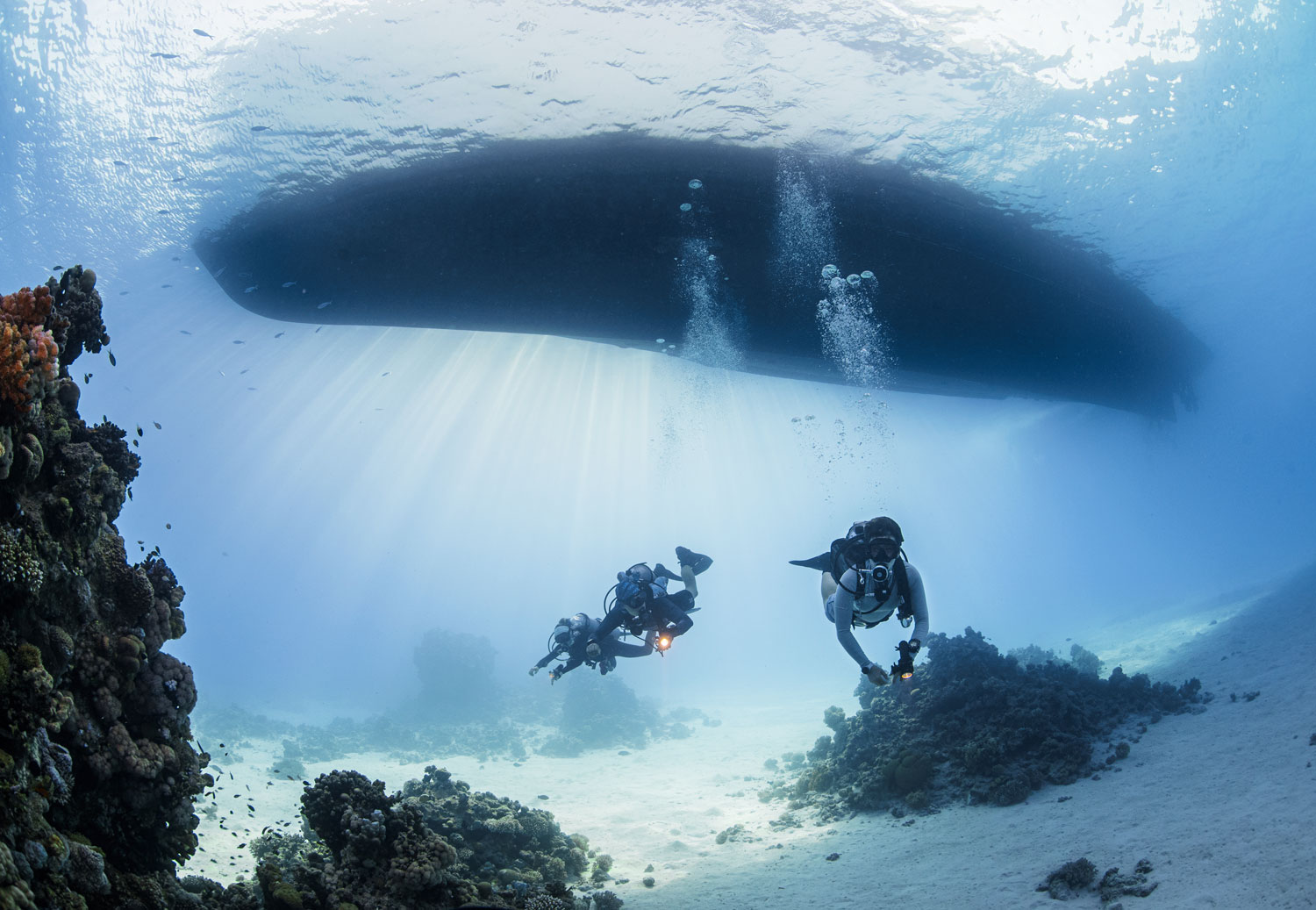
Most of the diving agencies offer a Solo diving course insisting on equipment redundancy and other safety procedures. Some divers will, of course, argue that it is sometimes safer to dive alone rather than in bad company, and that is perhaps wrongly true. The differences in perceptions between divers should be addressed on the surface, prior to the dive, in order to understand what made the company ‘bad’ at first sight. Most of the time the answer will relate to one of the diving foundations missing for one diver or another, and sometimes the answer will relate to poor communication, preparation and planning before anyone even dipped their fin tip in the water.
“Once underwater, words are no longer spoken, but communication is enabled through other means; hand signals, writing, light signals and touch contact. However, much of the real communication is unspoken…”
Diving is more about committing to a common goal of sharing, rather than about achieving greatness on our own. Coming together is a beginning, staying together is progress, and diving as one, a success. Anthropologists admire starlings’ remarkable ability to maintain cohesion as a group in highly uncertain environments and with limited, noisy information. When uncertainty is present, interacting with a limited number of neighbours optimises the balance between group cohesiveness and individual effort.
About the Author
Audrey Cudel is a cave explorer and technical diving instructor specialising in sidemount and cave diving training in Europe and Mexico.
She is also renowned in the industry for her underwater photography portraying deep technical divers and cave divers. Her work has appeared in various magazines such as Wetnotes, Octopus, Plongeur International, Perfect Diver, Times of Malta, and SDI/TDI and DAN (Divers Alert Network) publications.

